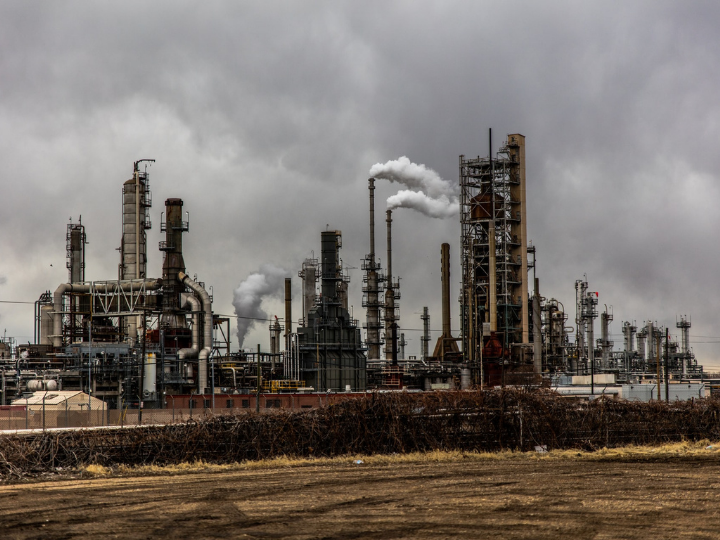by Nikolaus J. Kurmayer
A new report by Deloitte says massive cost savings can be achieved on the way towards climate neutrality if gas is given a more prominent role.
The role of hydrogen in making Europe climate neutral was the central theme of an event on Wednesday (7 July), which presented the findings of the Hydrogen4EU report, a multi-disciplinary research partnership funder by the oil and gas industry.
The findings of the report were clear: although green hydrogen made from renewable electricity sources will be crucial to meet the EU’s climate neutrality goal, it won’t be sufficient to meet all future hydrogen demand.
“The biggest user of Hydrogen in 2050 is the transport sector,” said Deloitte’s Johannes Truby, one of the authors of the report, who predicted that Europe’s total hydrogen demand is likely to be above 100 million tonnes by mid-century.
The report estimates that more than 50 million tonnes of hydrogen will be used in transport by 2050, either directly in fuel cells, or as part of synthetic fuels, while European industry will require 45 million tonnes.
IFP Energies Nouvelles (France) and SINTEF (Norway) are the two research organisations behind the report, which was funded by 17 partners: BP, ConocoPhillips, Concawe, ENI, Equinor, Ervia, ExxonMobil, Gassco, Hydrogen Europe, IOGP, Norwegian Oil & Gas Association, OMV, Shell, Snam, Total, Wintershall Dea, Zukunft Gas.
Adina Valean, the EU’s transport commissioner, was the keynote speaker at the event. She said the European Commission is set to modernise its guidelines for the trans-European transport network (TEN-T) in a proposal due to be published in October.
“Hydrogen fuel cells vehicles have a role to play particularly for long distance heavy duty road haul,” Valean said. She also noted hydrogen’s clear role in Europe in aviation and maritime transport.
Hydrogen seems indispensable to decarbonise long-distance transport, whether by land, air or sea. “Hydrogen has the advantage of a high energy density that is needed to propel big and heavy vehicles over long distances,” said Truby.
The report advises policymakers to keep all options open when it comes to hydrogen production, saying a technologically diverse model brings down the cost of building a hydrogen value chain by €2 trillion by 2050.
Green or blue hydrogen?
At more than 100 million tonnes per year, the report projects that hydrogen demand by 2050 will be massive, mostly driven by transport and heavy industries like steelmaking, cement and chemicals.
This means both production and transport will become a challenge.
Repurposing existing gas pipelines to carry hydrogen would “cost not more than 20%” of total infrastructure cost, said Noe van Hulst, Hydrogen Advisor at the International Energy Agency (IEA), who is also advisor at Gasunie, a Dutch gas company.
According to van Hulst, the blending of gas and hydrogen in natural gas pipelines can also be envisaged as a low-cost intermediary solution, because it requires no changes to infrastructure.
Yet, the report acknowledges that most hydrogen demand by 2050 will have to come from renewable energy sources. And to achieve that, a lot more renewable electricity capacity will be needed to power electrolysers that split water molecules to generate zero-carbon hydrogen, the report said.
To fulfil Europe’s 2050 hydrogen demand, “1,000-1,700 GW of dedicated solar photovoltaics, a similar amount of wind power and 680 to 1500 GW of electrolysers” would be required, Truby said.
As of today, the EU has installed 120 GW of photovoltaics and 170 GW of wind power in total. That would be enough to meet only 10% of green hydrogen demand by 2050, Truby said.
He therefore concludes that so-called “blue” hydrogen, made from natural gas with subsequent carbon capture and storage (CCS) must be promoted at European level, in order to contribute to the low-carbon hydrogen mix.
However, the European Commission is cautious about throwing its full weight behind blue hydrogen. In its hydrogen strategy presented in July last year, the EU executive charted a path towards 100% hydrogen production from renewable energy sources, saying blue hydrogen will only be supported as a stepping stone.
Low-carbon hydrogen “is very much a transitional time thing” from the Commission’s perspective, said Peter Handley, deputy director at the European Commission’s directorate for internal market, entrepreneurship and SMEs (DG GROW).
According to Handley, “80% of the production side proposals” submitted by industry via the Commission’s Clean Hydrogen Alliance “were related to electrolysers” that produce zero carbon hydrogen made from renewable electricity.
By 2030, the Commission aims to build 40 gigawatts of electrolysers across Europe, capable of producing up to 10 million tonnes of renewable hydrogen.
Towards hydrogen import dependency?
The report also underline the importance of importing hydrogen from gas-producing countries such as Russia and Iran.
However, EU officials are sceptical about this. “If you’re going to replace a gas import dependency for hydrogen, you’re missing an opportunity,” said Handley.
Some EU states also look suspiciously at hydrogen imports. While the energy hungry industrial north – Germany, Belgium and the Netherlands – is looking at ramping up hydrogen imports from places like Australia, others like France, Hungary and Poland are dubious, saying Europe should aim first at developing its own industrial production capacity.
The anti-importers have also found an ally in Europe’s electricity giants, who have called on the European Commission to impose a carbon tariff on hydrogen imports “in order to avoid fossil-based and highly emitting hydrogen imports” entering the EU market.
*first published in: www.euractiv.com




 By: N. Peter Kramer
By: N. Peter Kramer
